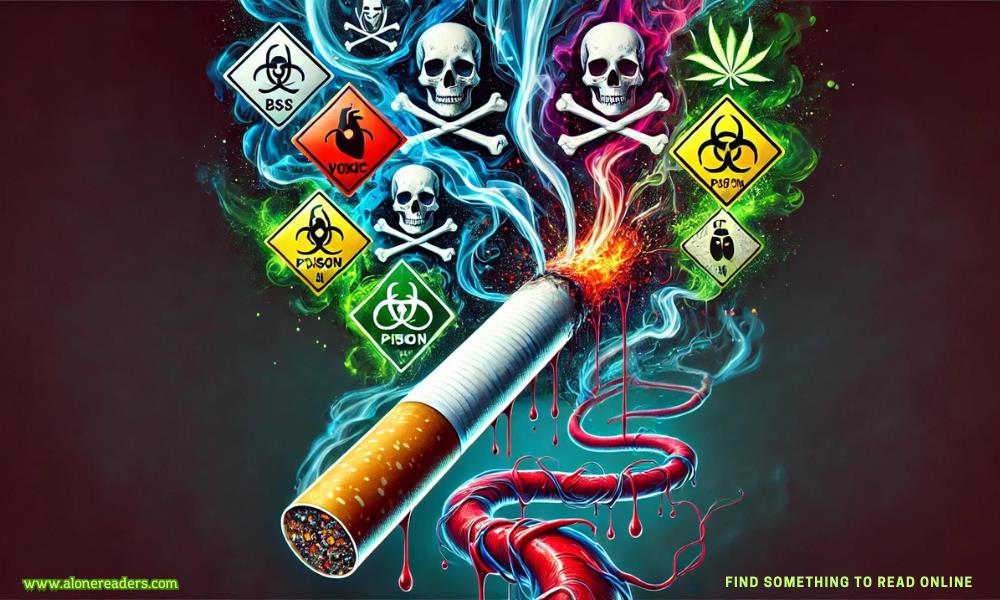
The act of smoking a cigarette often appears innocuous, a common sight in daily life. However, the reality hidden behind the veil of smoke is far more sinister. If the toxic substances found in a single cigarette were to be injected directly into the bloodstream, the consequences could be fatal. This alarming fact underscores the severe health risks associated with smoking, a habit that affects millions globally.
Cigarette smoke is a complex mixture of over 7,000 chemicals, with at least 250 identified as poisonous. These chemicals include substances such as arsenic, formaldehyde, and hydrogen cyanide. Arsenic, commonly used in rat poison, can cause severe health issues even in small doses. Formaldehyde, used for preserving dead bodies, is a potent carcinogen. Hydrogen cyanide, used in chemical weapons, interferes with the body’s ability to use oxygen, leading to suffocation at a cellular level.
The inhalation of these toxic chemicals causes immediate and long-term damage to the body. Nicotine, the primary addictive substance in cigarettes, reaches the brain within seconds, creating a sense of euphoria and relaxation. However, this temporary pleasure comes at a high cost. Nicotine increases heart rate and blood pressure, contributing to cardiovascular diseases. It also disrupts the normal functioning of the brain, leading to addiction and making it extremely difficult for smokers to quit.
The respiratory system bears the brunt of the damage from cigarette smoke. The delicate tissues of the lungs are constantly bombarded with toxic particles, leading to chronic bronchitis, emphysema, and lung cancer. The tar in cigarette smoke accumulates in the lungs, causing inflammation and obstructing the airways. This not only makes breathing difficult but also reduces the lung’s ability to absorb oxygen, essential for the survival of all body tissues.
Beyond the respiratory system, the chemicals in cigarette smoke wreak havoc throughout the body. The cardiovascular system suffers greatly, as smoking leads to the narrowing and hardening of blood vessels, increasing the risk of heart attacks and strokes. The immune system is also compromised, making smokers more susceptible to infections and diseases. Additionally, smoking affects the skin, accelerating the aging process and leading to premature wrinkles.
The dangers of smoking extend to those around the smoker as well. Secondhand smoke contains many of the same toxic chemicals and poses significant health risks to non-smokers, especially children and pregnant women. Children exposed to secondhand smoke are more likely to suffer from respiratory infections, asthma, and sudden infant death syndrome (SIDS). Pregnant women who smoke or are exposed to secondhand smoke have a higher risk of miscarriage, premature birth, and delivering babies with low birth weight.
Quitting smoking is the most effective way to reduce the health risks associated with this deadly habit. The body begins to heal almost immediately after the last cigarette. Within 20 minutes, heart rate and blood pressure drop. Within 12 hours, carbon monoxide levels in the blood return to normal. Within a few months, lung function improves, and the risk of heart disease decreases. Over time, the risk of stroke, lung cancer, and other smoking-related diseases significantly reduces.
Despite the well-documented dangers of smoking, quitting can be an arduous journey. Nicotine addiction is powerful, and many smokers require multiple attempts to quit successfully. Support from healthcare professionals, nicotine replacement therapies, and behavioral counseling can increase the chances of quitting. Public health campaigns and smoking cessation programs also play a crucial role in helping individuals quit and preventing others from starting.
The battle against smoking is not just a personal one; it is a public health issue that requires collective action. Governments and health organizations worldwide are implementing measures to reduce smoking rates. These measures include increasing taxes on tobacco products, banning smoking in public places, restricting tobacco advertising, and providing support for smoking cessation programs. These efforts aim to reduce the prevalence of smoking and protect the health of current and future generations.
In conclusion, the toxic substances in cigarette smoke pose a severe threat to human health. With over 7,000 chemicals in cigarette smoke, at least 250 known to be poisonous, the risks are undeniable. The immediate and long-term health effects of smoking are devastating, affecting not only smokers but also those around them. Quitting smoking is the best way to mitigate these risks and improve overall health. It is imperative for individuals, communities, and governments to continue the fight against smoking and create a healthier, smoke-free world.